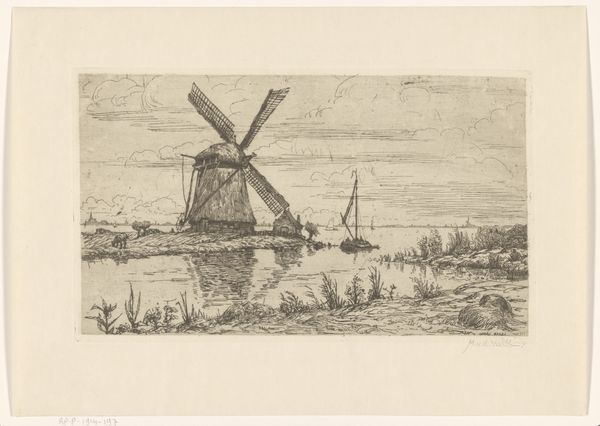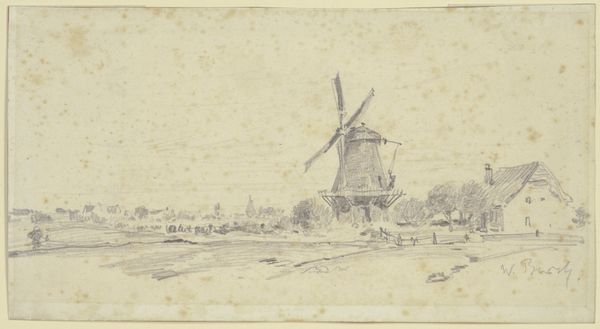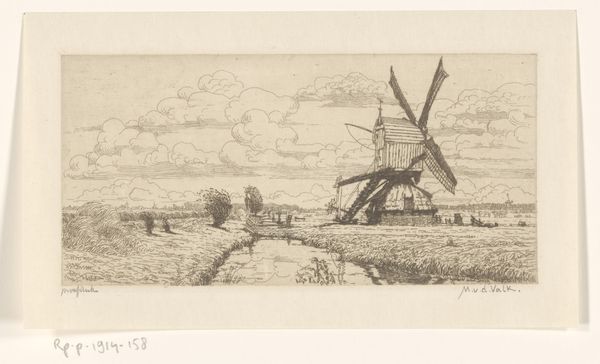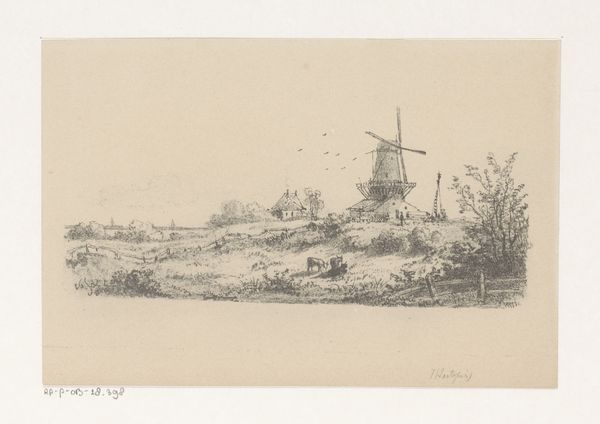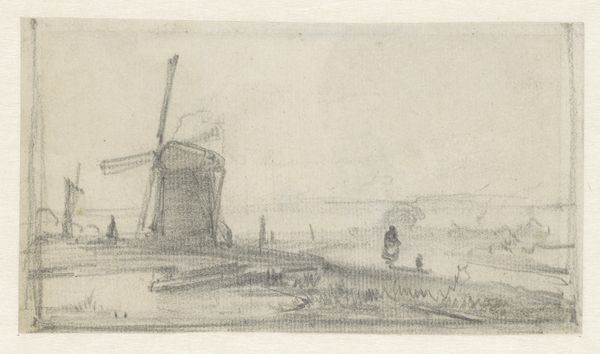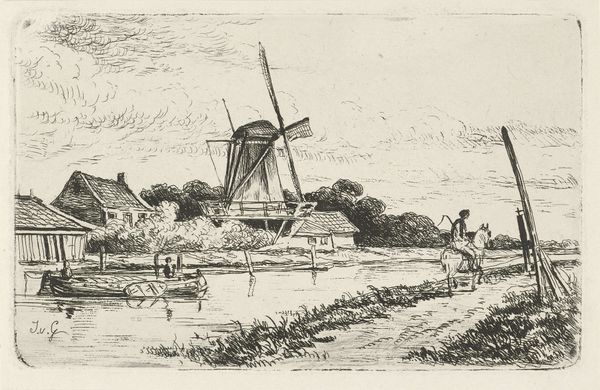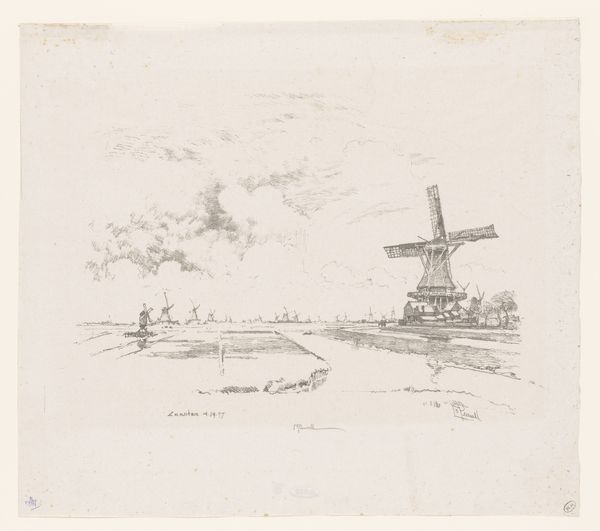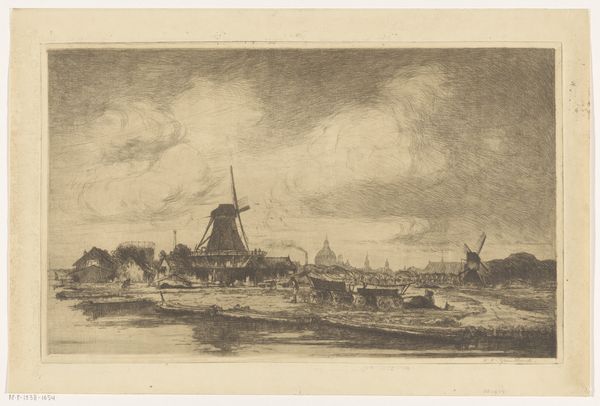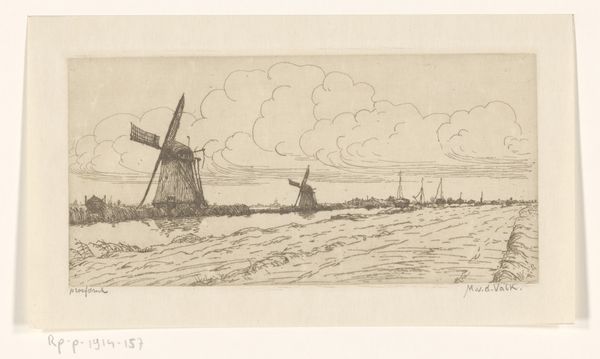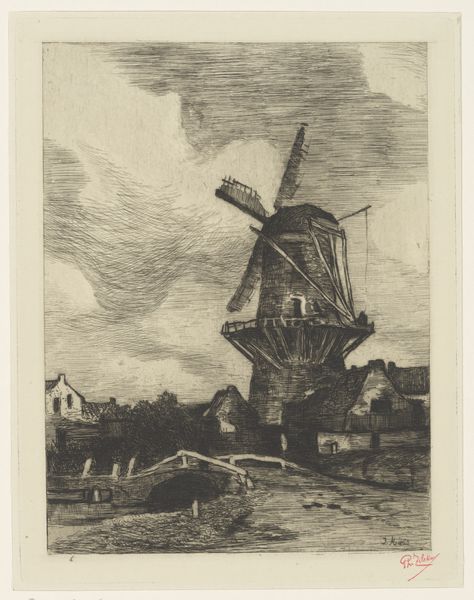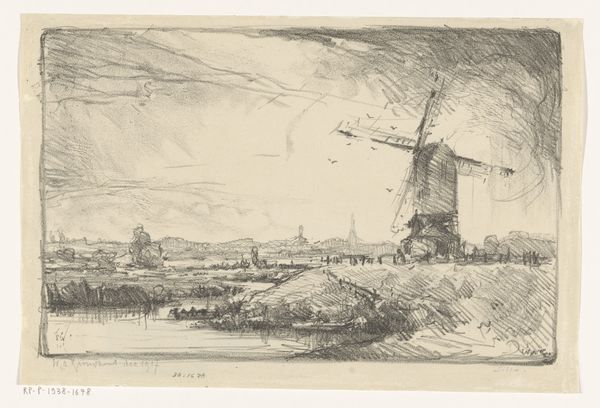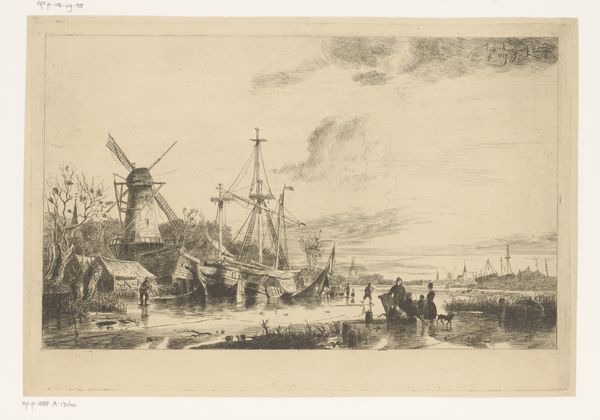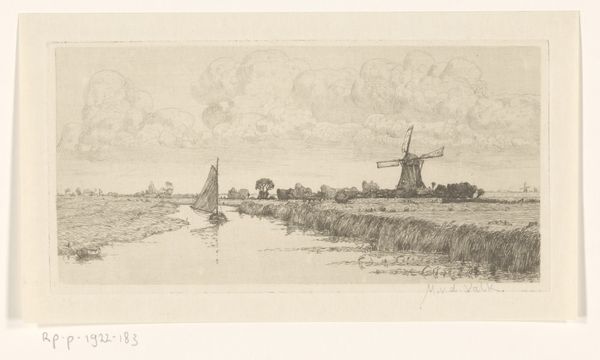
drawing, print, etching
#
drawing
#
dutch-golden-age
# print
#
pen sketch
#
etching
#
pencil sketch
#
landscape
#
etching
Dimensions: height 339 mm, width 445 mm
Copyright: Rijks Museum: Open Domain
Willem Roelofs created this landscape featuring a windmill, using etching and possibly other techniques. The image is a black-and-white print, made from an etched metal plate, where acid was used to bite into the metal, creating lines that hold ink. The level of detail suggests Roelofs was a master of his technique, able to render subtle tonal variations and textures. Think about the built environment of 19th century Holland. Windmills like the one depicted here were important pieces of infrastructure, grinding grains, and performing other essential tasks. They also became picturesque symbols of Dutch culture. The printmaking process itself is significant. It allowed for the mass production of images, making art more accessible to a wider audience, connecting art with the rise of consumer culture. The artist’s labor, translated through skilled work, finds its way into the final composition. Appreciating this, we move beyond the image itself to consider its means of production, and the changing social context in which it was made.
Comments
No comments
Be the first to comment and join the conversation on the ultimate creative platform.
